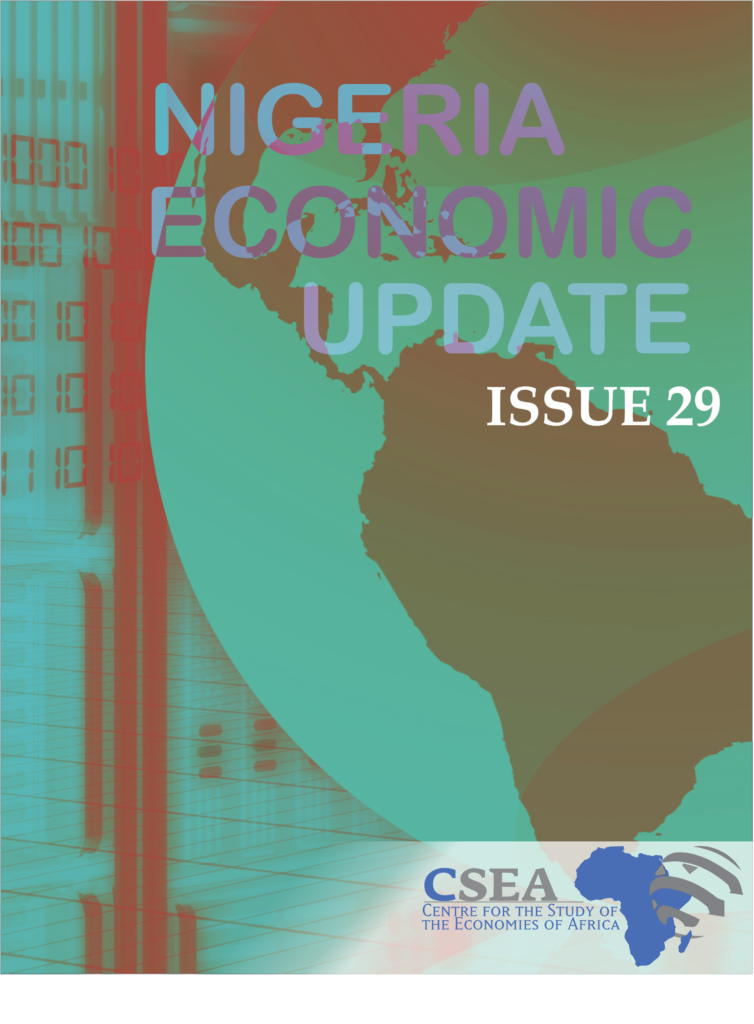The IMF retained its 2.1 percent forecast of Nigeria’s GDP growth rate for 2018, while increasing the 2019 projected GDP growth rate to 2.3 percent1, from 1.9 percent projected earlier. The stated review is at the backdrop of continued increases in commodity prices in the long term, for which crude oil is the benchmark for Nigeria. Outlook on crude oil price and production is expected to maintain upward improvements in the near term. However, the Nigerian government pegs its own forecasted growth rate at 3.5 percent in 2018 – higher than figures predicted by the IMF, although premised around the same driving factors. In order to achieve a 3.5 percent GDP growth rate, a more effective implementation of the bold initiatives in this administration’s economic plan – the Economic Recovery and Growth Plan – is critical particularly in the agriculture and manufacturing sectors.
Macroeconomic Report & Economic Updates

August 14, 2018
Nigeria Economic Update (Issue 29)
The IMF retained its 2.1 percent forecast of Nigeria’s GDP growth rate for 2018, while increasing the 2019 projected GDP growth rate to 2.3 percent1, from 1.9 percent projected earlier. The stated review is at the backdrop of continued increases in commodity prices in the long term, for which crude oil is the benchmark for […]
Read →
Related
Nigeria Economic Update (Issue 20)
Power sector
analysis shows an increase in power generated by 15.5 percent from 3639.2 megawatt
to a peak of 4196.2 megawatt between April 22, 2016 and April 29, 201612,
albeit a sharp fall to 25.2 megawatts on April 23, 2016 following a system
collapse13. In a bid to attain the targeted 10,000 megawatts by 2019,
the Federal Government is set to complete the ongoing 47 power transmission
projects across the country, which would boost power supply14.
However, the delays in passing the budget into law is a major constraint to the
completion of the projects. Thus government needs to speed-up the passage of
the 2016 budget to provide the funds to complete the projects.
Nigeria Economic Update (Issue 18)
Recent Data released by the Nigeria Bureau
of Statistics reveals an increase in total public debt stock between 2015 and
2016. Foreign and domestic debt stock stood at $11.4 billion and N14.0 trillion
respectively as at December 2016, from $10.7 billion and N10.5
trillionrecorded as at December 2015. Disaggregated
data shows that foreign debt sources comprised Multilateral ($8.0 billion),
Bilateral ($0.2 billion) and Exim bank of China ($3.2 billion); domestic
sources included government bonds, treasury bills and bonds. The federal
government and states accounted for 68.7% and 31.3% respectively of foreign
debt stock; 78.9% and 21.1% respectively of domestic debt stock. This maybe
particularly at the backdrop of government borrowings in 2016 to finance its
expenditure (mostly recurrent).
